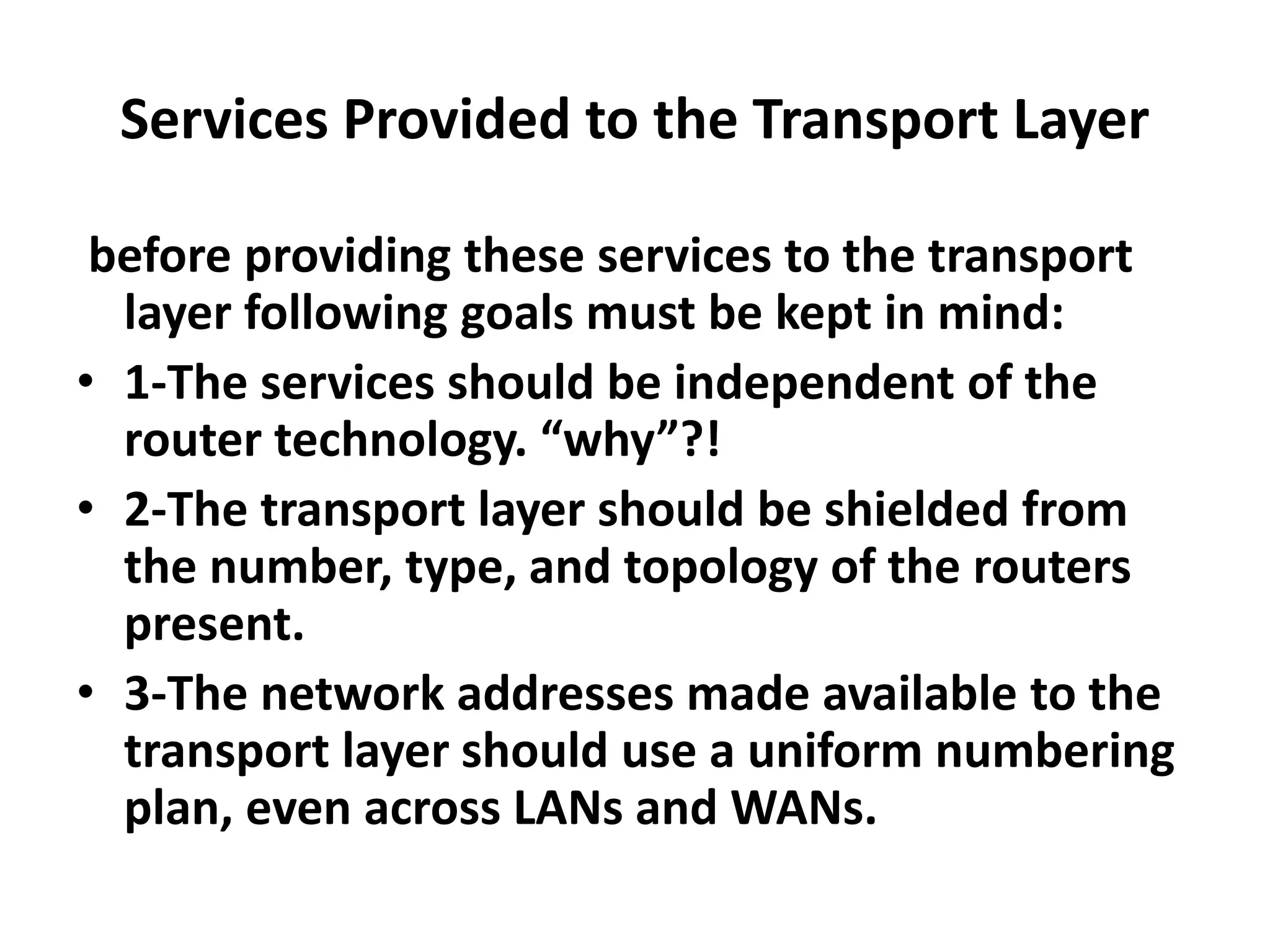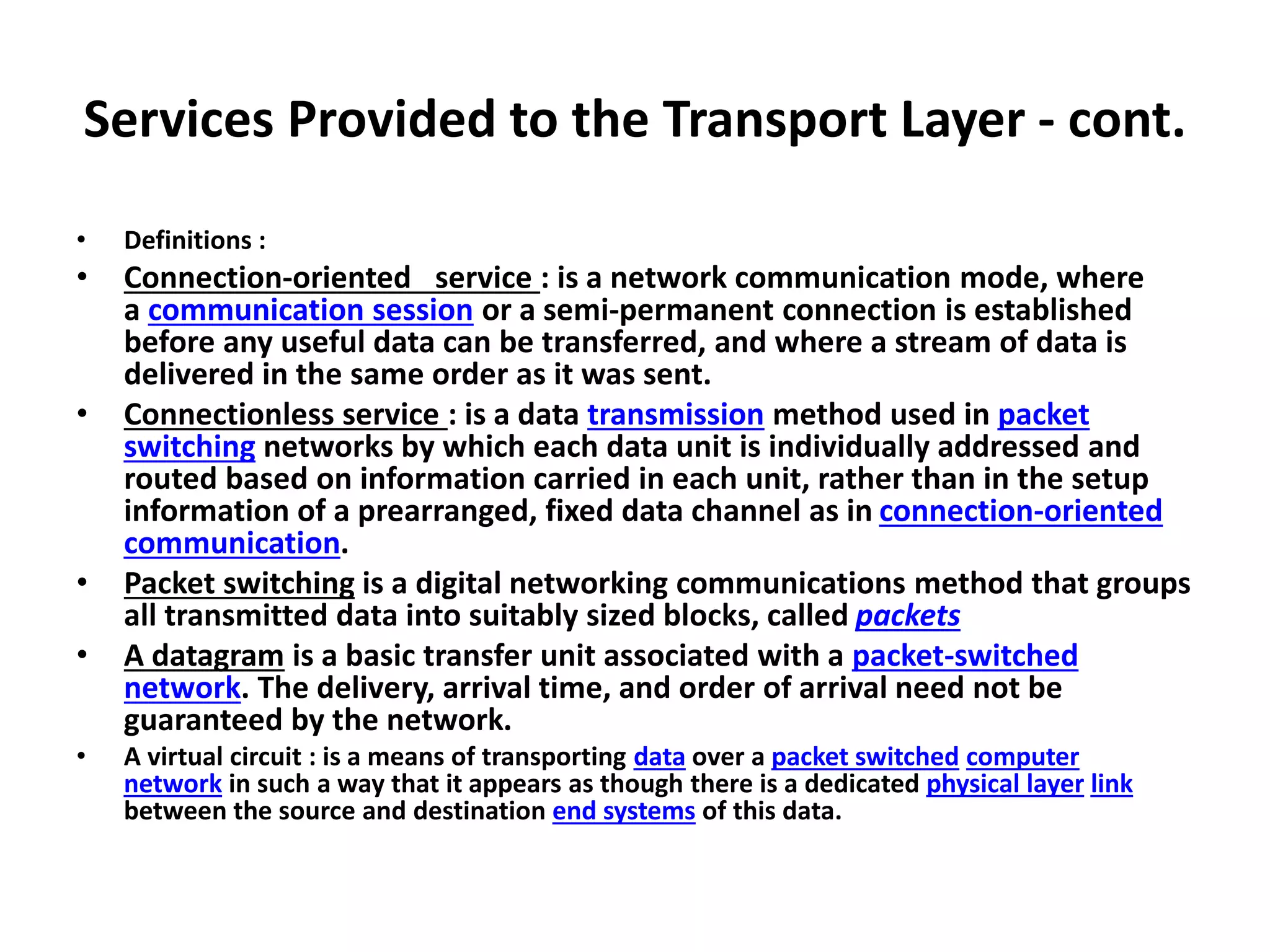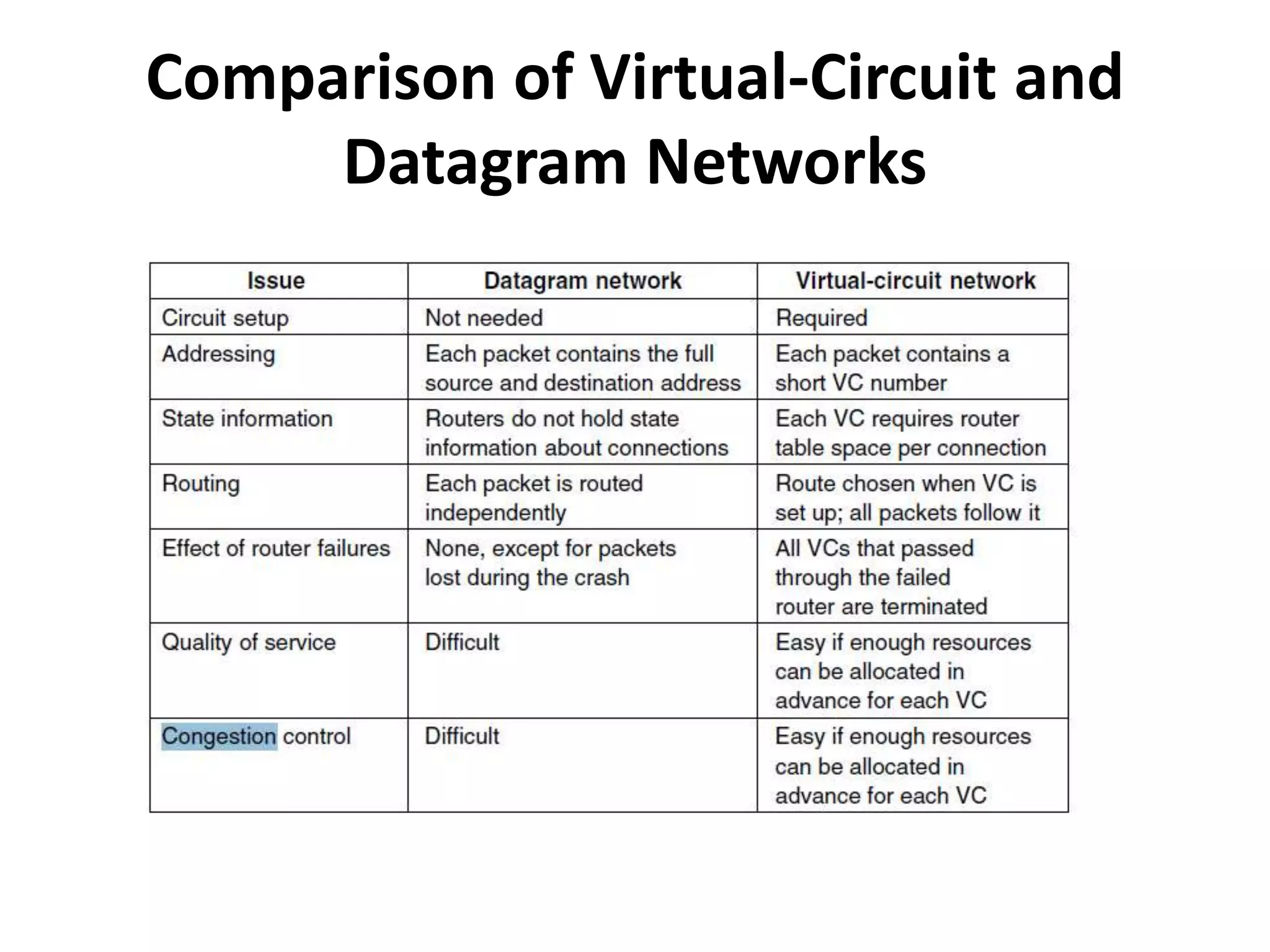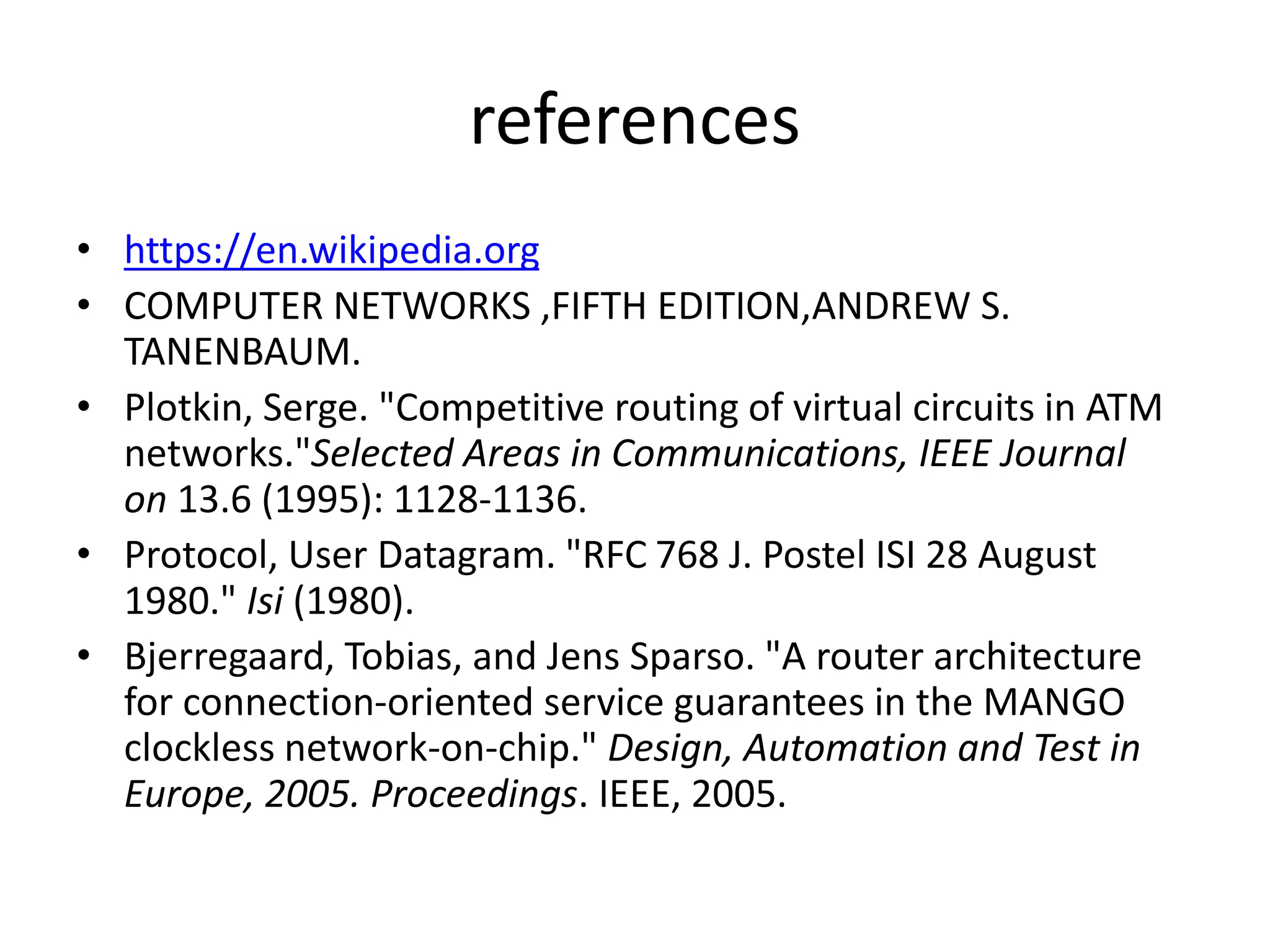The network layer is responsible for end-to-end packet delivery from the source to the destination, implementing services without dependency on router technology. It can offer either connection-oriented or connectionless services, with virtual circuits establishing a path for data transmission or datagrams allowing independent routing of packets. The debate over service preferences highlights a divide between internet and telephone company perspectives on the reliability and methodology of packet transport.











